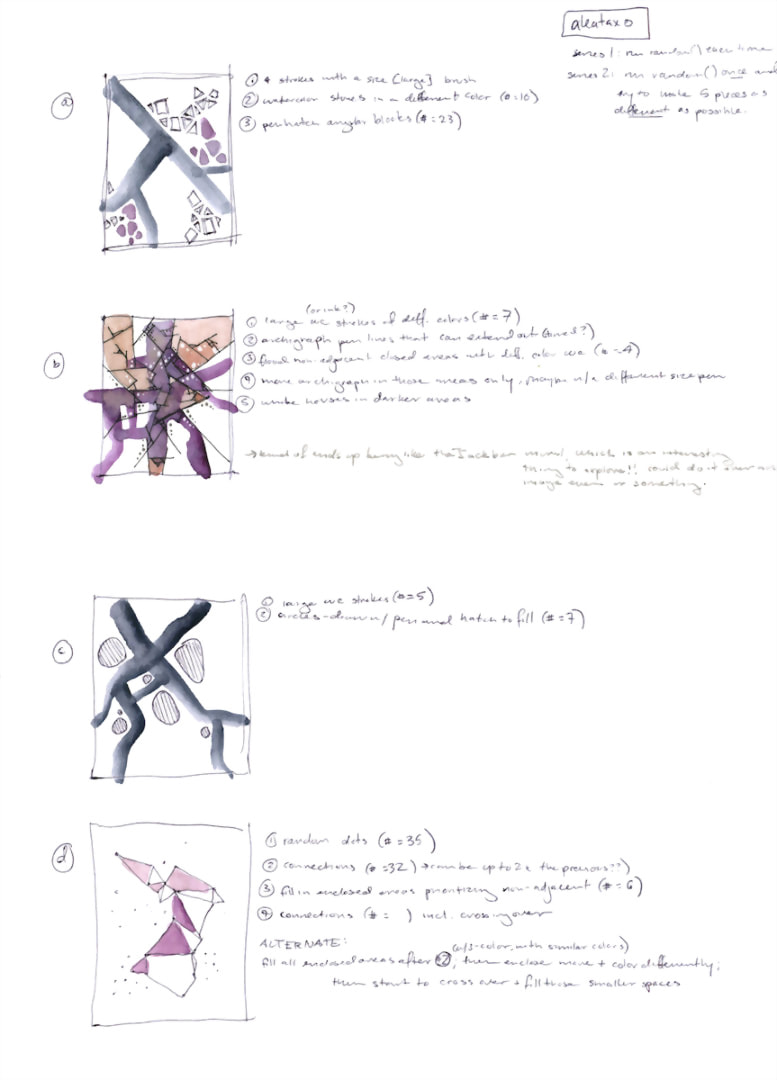“Aleataxonomy”, my shorthand from “aleatoric” (created from random action) and “taxonomy” (referring to the classification of the elements I use in drawings), is a recent series based specifically on limiting drawings to randomly-generated numbers of elements in sequence. The project takes on the problem of end condition, or “when is the drawing done”, that I’ve been dealing with since working on series like Schema (one of the first that departed from my historic end condition of “whenever the pattern goes to the edge”). My hypothesis was that even with an artificial end condition, these drawings wouldn’t end up looking unfinished because of the conscious and subconscious aesthetic evaluation I unavoidably engage in as I draw.
Procedurally, I would first figure out what types of patterns would work for this process, break down their individual procedures into steps and ranges, and then write up a script in Processing that would render out random values (within the range) each time it ran.



For some of these processes I made intermediate sketches to determine how I should balance out the ranges of values before I could write the randomizing script.


Once I had a solid idea of the steps and ranges of values, I wrote scripts that would choose a random number from a range for each step and, critically, read the choices back to me in clear step-by-step instructions. Much of “aleatoric” art has to do with physical randomization tools like dice, but since I had access to coding text output and random value generation in Processing, that made it possible to write custom ranges in absolutely whatever value I might want.
Once I had the readout, my task was to follow the instructions to the letter (often using tally marks on scratch paper to record how many of each mark I’d completed).
– Example of a first step. The result of the Processing “dice roll” is at the bottom of the black rectangle below the code. (For those following along at home, the code that requests that printout is println())
– Process for a full drawing
There are many ways I can take this kind of process. One of the options I wanted to pursue was to try using the same exact values to make multiple drawings. Would they be the same, indistinguishable, or somewhere in the middle?




One of the unexpected upshots of this project was learning just how many houses or lines I might be able to draw in a small space without realizing. Even when I was dealing with scales like 6”x8” and large numbers like 150-250, it turns out that’s barely enough “house” marks to look inhabited.
In general, I’m glad I indulged this impetus to take programmatic drawing to a bit of an extreme. It’s another tool I can use to determine when a piece is “finished”; it allowed me to explore aesthetic balances that I might not have chosen to work with before; and in a way it gives me more confidence in the persistence of my artistic style.

